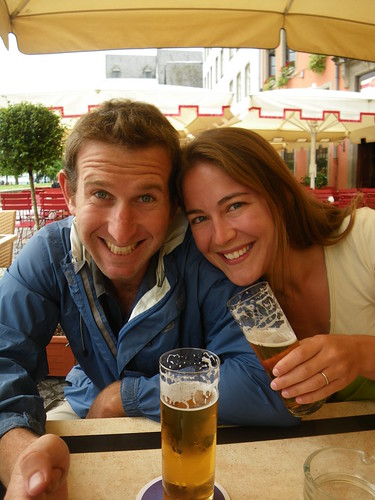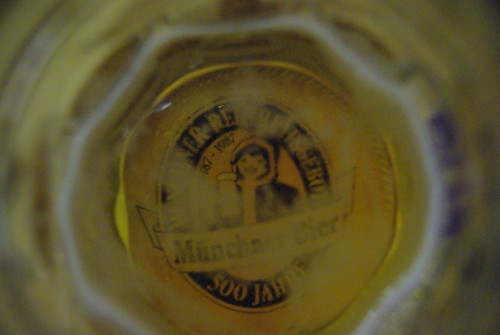Yes, that’s right. This week we dedicate our food post to what Benjamin Franklin called: “Proof that God loves us and wants us to be happy!”
Franklin himself spent two months in Germany, and although his love of beer is legendary, I’m curious what kind of beer he actually had on his trip to the country. I say that because everywhere we go, each of the 16 states, (Länder in German) each city, each town, and seemingly each house, has its own kind of beer. In some places it is a re-bottling of a familiar taste under a new label and in others the choice of beer is as important as the language you speak.
We started our time in Berlin drinking Berliner amongst other things. Generally a pilsner like beer but not from the Czech region by that very name…it gets a pass in my book on enjoyment factor….especially given that as we drank them at room temperature no one (including your two favorite bloggers) realized that they hadn’t been refrigerated.
Next up, in Cologne, the kingdom of Kölsch we learned that the local brew—Kölsch—is not only the local brew but also the name of the original dialect of German spoken in the region…making it the only language in the world that you can both speak….and drink! Any beer not produced within Cologne city limits cannot, by definition, be considered Kölsch. On that note of classification, all you porter fans should know that if a beer has sugar…it’s not a beer… 🙁
Munich would be the place to put our beer drinking skills to the test. After being in town only a few hours we found ourselves seated inside the infamous Hofbrau Haus with one of our hiking mates from Mt. Kilimanjaro. She and I each had a liter of the local Augustiner while Jill went for a smaller and more refined hefeweizen, later deciding to go for a second half liter in order to catch up. She somehow combined the German word for one (Ein) with the Spanish word for more (mas) but quickly learnt that ‘masse’ in German is the word for ‘liter’ instead of ‘more’….needless to say she needed a little bit of support to finish her ein masse (one liter) which was not hard to come-by.
 The beer doesn’t end with Germany though, in fact it merely just continues everywhere we go. In Prague, passing through the town of Plzen we caught a quick glimpse of the Pilsner Urquell brewery on our way to Prauge. We later learnt that Pilzner Urquell literally means “original source of pilsner“ in German…not even Czech.
The beer doesn’t end with Germany though, in fact it merely just continues everywhere we go. In Prague, passing through the town of Plzen we caught a quick glimpse of the Pilsner Urquell brewery on our way to Prauge. We later learnt that Pilzner Urquell literally means “original source of pilsner“ in German…not even Czech.
The most important brewery in the Czech Republic—to an American—is not its biggest exporter; in fact this brewery is able to export to a mere handful of countries. This is because the of a pioneering American by the name of Adolphus Busch, who visited the city of Budweis in the Kingdom of Bohemia, in 1876 and came home and set to work using the name and the style of beer in his home country. Budweiser is known to all of us in the States but tasting the true namesake was a special treat. The best part was the style in which it was served to us; a light pilsner styled beer mixed (as if they’d stirred a black & tan) with a darker lager. In Czech this is known as a ‘rezane’ and by all accounts was absolutely fantastic…certainly having nothing to do with the word Budweiser on the glass….
Beer is one of the best things in the world! I’m always looking for the best new microbrew. I even have a beer coaster collection(is that bad? I don’t know). There are two countries I can’t wait to visit to go beer-crazy: Ireland and Germany. I have a feeling my travel funds are going to deplete very quickly in Germany! 😀
@Eli- hmmm beer. 🙂